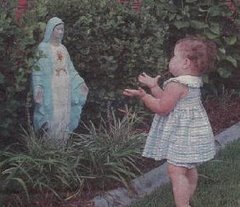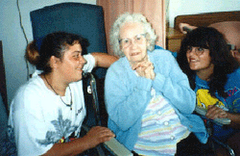The peasant people that are described in this book are analyzed for their
minds and motivations...their conceptions of cognitive power and reality, their philosophy on the nature of man...their self-developed conceptions of the external nd spiritual world, their manner of coupling Christianity and the social world, their forms of crreativity, their politics; their plain but penetrating distinctions between male and man, "woman" and "female," their conception of manhood in women and the sadness of weak men, their concepts of guilt, their attitudes toward sex, courtship and marriage.I've always wondered if the social environment and rich way of life in the U.S. did not have a lot to do with the sexual sins that we now see affecting family life. See my previous post on The State of our Unions. Do peasants in poor, rural, Christian cultures commit many sexual sins?
Fr. Sivric has a section on "Sexual Attitudes" in his book and notes that
Genital sexuality, sexual love, and eroticism are not taboos among the peasants. They are not prudish about matters of sex; rather their mentality leads them to be relaxed and explicit about sexual behavior.He follows this comment with
Premarital sexual experiences among the peasants are of insignificant proportions. This, of course, varies from village to village. One fact does stand out; namely, that the closer a village is to a town or city, the greater the number of premarital sexual experiences.Fr. Sivric adds
I have heard some priests, who preached eight-day retreats and heard a great number of confessions all over these provinces, say, that in certain regions ninety-five percent of the whole population (including both men and women) who reach the age of seventy or more, have never seriously offended God in their entire lives.A section in his book tells of his hearing many confessions of young and unmarried men between the ages of eighteen and twenty-four when he heard no confessions of of masturbation, even when he gave the young men a hint of a possible sin. Fr. Sivric continues,
I myself have wondered if it was possible that none of the peasant boys masturbated, so I consulted anothe priest on this issue. This priest preached many eight-day missions in various parishes and heard at least 50,000 confessions from different individuals during his priestly life. The reason I chose this particular priest was bcause the peasants during an eight-day mission usually opened their minds and souls unreservedly to a priest in confession and would mention the slightest moral offensve if it would disturb their conscience. He said practically no one ever mentioned masturbation.Another section on homosexuality in the peasant culture states
Homosexuality among the Christian peasants is unheard of. But the sexual aberration is in practice to a certain extent among the Mohammedans, who live in small cities and towns. This is known by the Christian peasants, and they look upon it with great disgust and horror. They regard it as a kind of perversion which can be attributed to their mode of living.....The Mohammedans have lived in luxury and affluence for centuries....The peasants say..."they have lived highly." Now they are at the end of their rope and cannot find pleasure in normal sexual activity.Rape is also treated by Fr. Sivric in his historical analysis.
The peasants believe that rape is the most gruesome crime that a person can commit. Their disgust for this moral offense has reached such proportions that they are unwilling to forgive the offender. Married and unmarried women who are slain while defending themselves are considered martyrs. The graves of such victims are found all over Bosnia.An important book, but it may be out of print.










